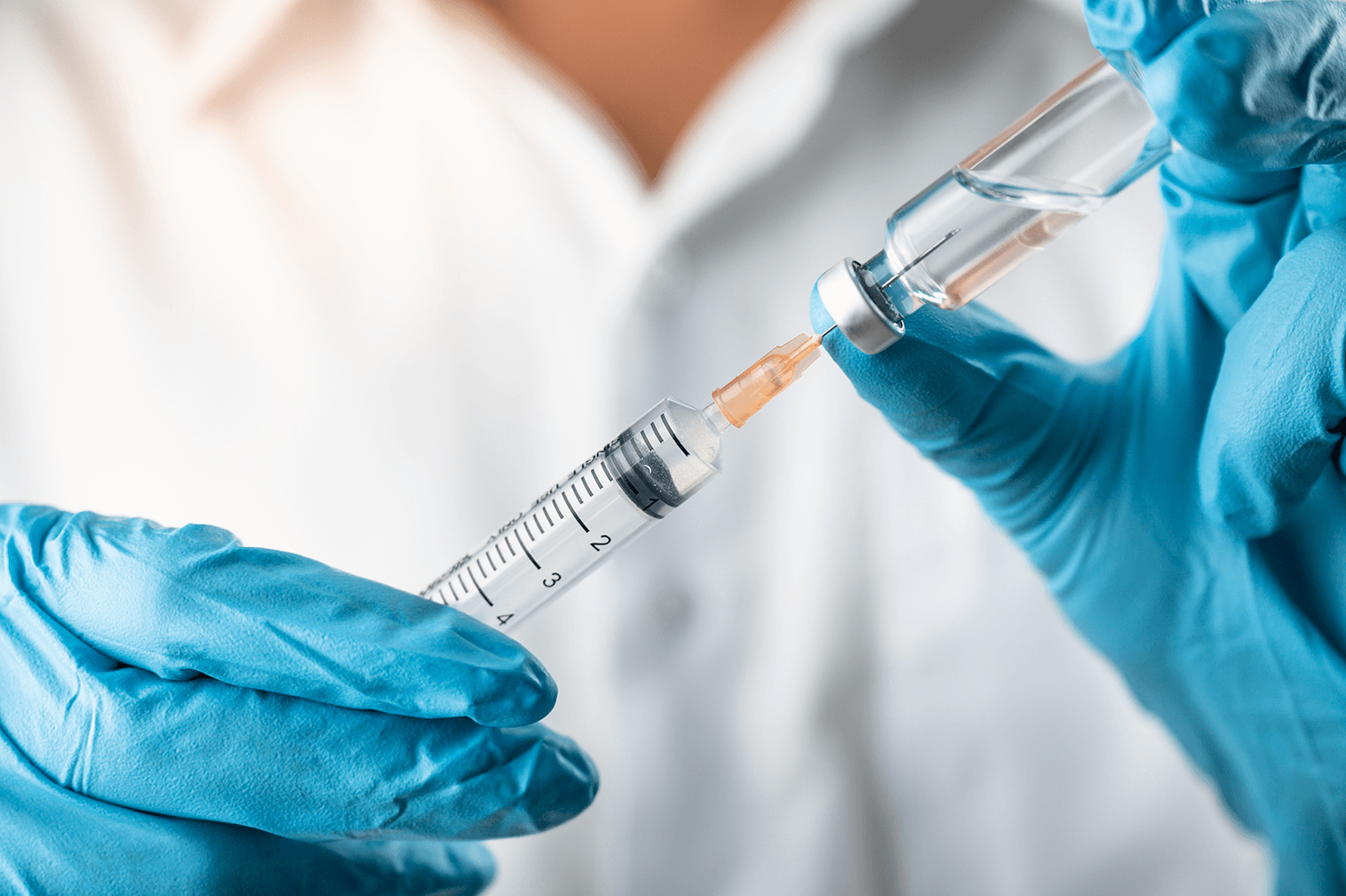10/12/21—The COVID-19 pandemic brought many changes in the United States, as people were hurdled into a new normal with lockdown, social distancing, and safety practices like masking and isolating. Another new aspect was the rapid development of COVID-19 vaccines, which have been shown to be effective in protecting against the virus, but still have people hesitating. Learning how COVID-19 vaccines were developed can help ease many worries people may have about receiving this essential and effective protection.
According to the Centers for Disease Control and Prevention (CDC), 56.4% of Americans are vaccinated against COVID-19. While this number is promising, in order to stop the spread of COVID-19 and growth of variants, more vaccinations are needed. According to a recent poll by the American Psychiatric Association, 1 in 5 Americans say they won’t get vaccinated, with the speed of vaccine development being a major cause for hesitation.1 While speed was unprecedented, there were many reasons for it both globally and historically.
Firstly, it’s important to note that coronaviruses are nothing new, having been studied for decades in human and animal populations. According to the National Institute of Allergy and Infectious Diseases, there are hundreds of coronaviruses — including four that can cause the common cold, as well as the coronaviruses that sparked the SARS epidemic in 2002 and the emergence of MERS in 2012.2 With all this past research and groundwork laid, scientists had a head start with plentiful data on the lifecycle and structure of the coronavirus.
Another major contribution was collaboration. Vaccines are studied and researched for years, along with their respective diseases, by countries all over the globe. Consolidating that data can take years as well. With the speed of COVID-19 spread quickly becoming a global emergency, time was of the essence. Scientists and doctors worldwide came together to share research and thrust the vaccine process forward, to fight the oncoming pandemic. In fact, before COVID-19 had spread or even had a name, Chinese scientists had already been studying it after the first confirmed death, having uploaded its genetic sequence to a public site, which helped provide a running start towards figuring out the sequences needed to fight it.3
Funding also played a role in the rapidity of vaccine development. In 2018, a study in The Lancet Global estimated the cost of early development and clinical safety trials for a vaccine to be in the range of 31 to $68 million.2 It is already estimated that in 2021 alone, $54 billion will be spent globally on continued development and production of COVID-19 vaccines.4 The exceptional global investment into research and supplies needed for the COVID-19 vaccines led to its swift development and availability. It is already estimated by U.S. health data company IQVIA Holdings Inc. that global spending on vaccines, including vaccination programs and “booster shots” will hit $157 billion by 2025.
The technology behind these new vaccines is a gamechanger in the speed of vaccine development. Simply put, previous vaccines have used weakened or inactive germs to help our immune systems build immunity and fight off specific viruses. The COVID-19 vaccines, Moderna and Pfizer specifically, are a new kind of vaccine known as mRNA. These kinds of vaccines have been studied and developed over years of research in animals, with safety being of the utmost importance. Now being used on humans, these vaccines differ from previous ones as they teach our cells how to make a protein that triggers an immune response inside our bodies.5
To develop this teaching process, the structure and genetic makeup of a virus is needed. “From a technology perspective, what’s really interesting is in late January [2020], we were able to [detect the genome sequence of COVID] and put it on the internet, and researchers around the world had access to it, and that is unprecedented,” said Kathleen Jordan, infectious disease specialist and senior VP of medical affairs at Tia.6
Typically, clinical trials can take years to complete, due to the sizeable amount of administrative work needed to begin. As it became apparent that COVID-19 was a rapid global threat, regulatory agencies all over the world were able to make COVID-19 a priority, bringing on extra help thanks to added funding, and utilizing a new method of review called rolling reviews. Rolling reviews means pharmaceutical companies were able to provide regulatory agencies with data as they received it, on an ongoing basis, throughout trials rather than waiting until the end of a trial to send all the data at once.6 This type of review process enhanced the speed of approval for COVID-19 vaccines, without sacrificing safety or study integrity.
The speed at which COVID-19 vaccines have been developed and supplied is no doubt new, but the reasons for this are complex. While more vaccinations are still needed, education about how these vaccines became so readily available can hopefully ease vaccine hesitancy. Regardless of vaccination status, the CDC recommends continued safety practices, like masking, social distancing, contact tracing within businesses and organizations, and quarantining when sick, to prevent COVID spread.
AlertTrace is honored to be a part of the global fight again COVID-19, with top-of-the-line technology that provides quick, reliable, and accurate data to help you stop the spread of COVID-19 within your company or organization.
Contact us today to learn more!
…
1 Lance, R. (2021, June 28). How covid-19 vaccines were made so quickly without cutting corners. Science News. Retrieved October 12, 2021, from https://www.sciencenews.org/article/covid-coronavirus-vaccine-development-speed.
2 MediLexicon International. (n.d.). Covid-19 vaccine: How was it developed so fast? Medical News Today. Retrieved October 12, 2021, from https://www.medicalnewstoday.com/articles/how-did-we-develop-a-covid-19-vaccine-so-quickly#Other-coronaviruses.
3 30, A. J. J., Joseph, A., About the Author Reprints Andrew Joseph General Assignment Reporter Andrew covers a range of topics, Andrew Joseph General Assignment Reporter Andrew covers a range of topics, & says:, T. you. (2020, December 23). How the world made so much progress on a covid-19 vaccine so fast. STAT. Retrieved October 12, 2021, from https://www.statnews.com/2020/07/30/a-huge-experiment-how-the-world-made-so-much-progress-on-a-covid-19-vaccine-so-fast/.
4 Person, & Mishra, M. (2021, April 29). World to spend $157 billion on covid-19 vaccines through 2025 -report. Reuters. Retrieved October 12, 2021, from https://www.reuters.com/business/healthcare-pharmaceuticals/world-spend-157-billion-covid-19-vaccines-through-2025-report-2021-04-29/.
5 Centers for Disease Control and Prevention. (n.d.). Understanding mrna COVID-19 vaccines. Centers for Disease Control and Prevention. Retrieved October 12, 2021, from https://www.cdc.gov/coronavirus/2019-ncov/vaccines/different-vaccines/mRNA.html?s_cid=11344%3Ahow+mrna+vaccines+work%3Asem.ga%3Ap%3ARG%3AGM%3Agen%3APTN%3AFY21.
6 Cassata, C. (2021, March 11). How it was possible to develop COVID-19 vaccines so quickly. Healthline. Retrieved October 12, 2021, from https://www.healthline.com/health-news/heres-how-it-was-possible-to-develop-covid-19-vaccines-so-quickly#Does-emergency-use-mean-corners-were-cut?
Centers for Disease Control and Prevention. (n.d.). Benefits of getting a COVID-19 vaccine. Centers for Disease Control and Prevention. Retrieved October 12, 2021, from https://www.cdc.gov/coronavirus/2019-ncov/vaccines/vaccine-benefits.html.
World Health Organization. (n.d.). How are vaccines developed? World Health Organization. Retrieved October 12, 2021, from https://www.who.int/news-room/feature-stories/detail/how-are-vaccines-developed?gclid=Cj0KCQjwwY-LBhD6ARIsACvT72PjhiHMQRRQ3gkT-7_gLpcIK0obZGOLal4XSf3b-imsOiN1R3zZt_8aAmt-EALw_wcB.




